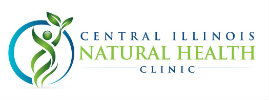Starting with last week’s article about policosanol, I have been outlining five of the most common misperceptions I encounter in the field of natural medicine, and examine some more effective alternatives.
Myth #2: Cinnamon controls blood sugar (or even “cures” diabetes).
T’ype 2 diabetes and “pre-diabetes” (insulin resistance) are on the rise in the U.S., thanks to the prevalence of junk food, and an increasingly sedentary lifestyle. These conditions involve a breakdown of the body’s ability to regulate blood sugar, so that it goes too high. High blood sugar itself may not sound very threatening, but it basically puts aging on fast-forward, dramatically increasing the risk of heart disease, kidney damage, and vision and nerve problems. Recent research even suggests that blood sugar at the high end of the “normal” range represents a significant risk factor.
Folks in the natural health field emphasize (or should emphasize) specific diet and exercise changes as the foundation to diabetes prevention and treatment. We also, when necessary, recommend nutritional supplements to help bring down high blood sugar levels. One of the most popular in recent years has been cinnamon, since it is safe, commonly available, and has been shown effective in lowering levels of hemoglobin A1c (HbA1c, the blood test for 3-month average blood sugars). I often recommended this to patients myself, until some recent clarification from my colleague, Jacob Schor, ND, of Denver Naturopathic Clinic. A recent meta-analysis (a study of studies) showed that cinnamon does indeed lower HbA1c to a statistically significant extent (1).
Huzzah! So what’s the problem? A closer look at the data shows that the average effect of cinnamon was a 0.09% decrease in HbA1c. Clinically, this is barely a dent in blood sugar. “Statistically significant” just means that the math panned out. By comparison, studies showed that weight loss and regular exercise can drop HbA1c three times as much as cinnamon (2). Berberine, an extract from various herbs such as Oregon grape route, barberry, and goldenseal, taken at doses of 500 mg, three times per day, lowered blood sugar twenty-two times as much as cinnamon (3).
If you are having blood sugar problems, or are already diabetic, don’t rely on cinnamon to control it (for pity’s sake, don’t use some of the research as an excuse to reach for a cinnamon roll!). It’s a great spice, but not great medicine.
1. Akilen R, Tsiami A, Devendra D, Robinson N. Cinnamon in glycaemic control: Systematic review and meta analysis. Clin Nutr. 2012 May 12.
2. Nilsen V, Bakke PS, Gallefoss F. Effects of lifestyle intervention in persons at risk for type 2 diabetes mellitus – results from a randomised, controlled trial. BMC Public Health. 2011 Nov 25;11:893.
3. Yin J, Xing H, Ye J. Efficacy of berberine in patients with type 2 diabetes mellitus. Metabolism. 2008 May;57(5):712-7.
